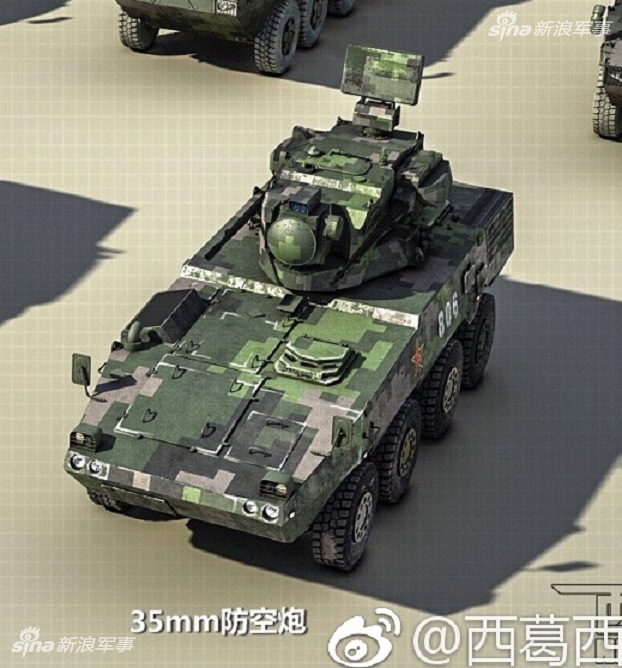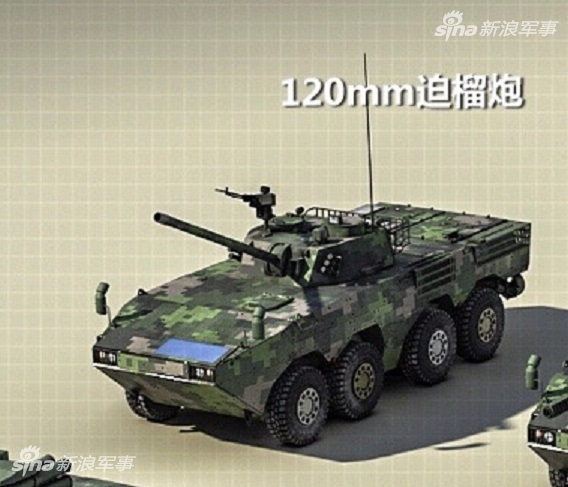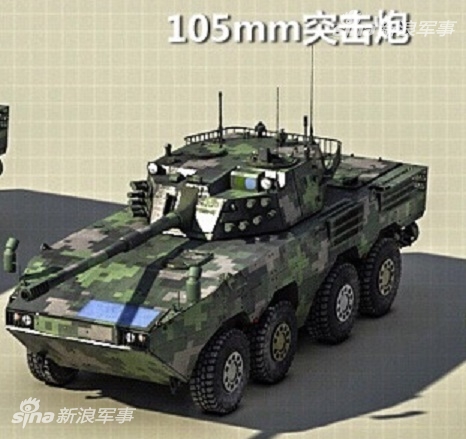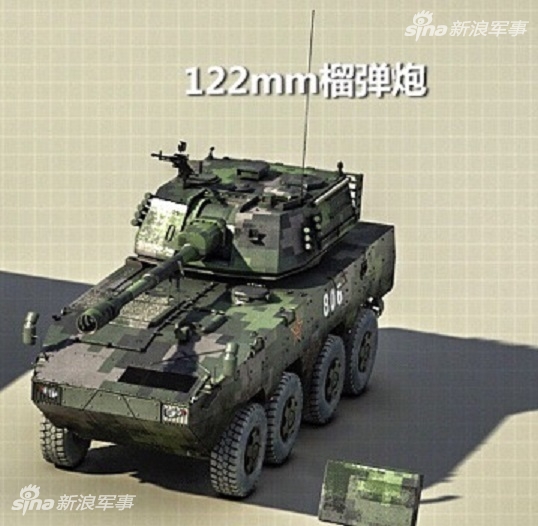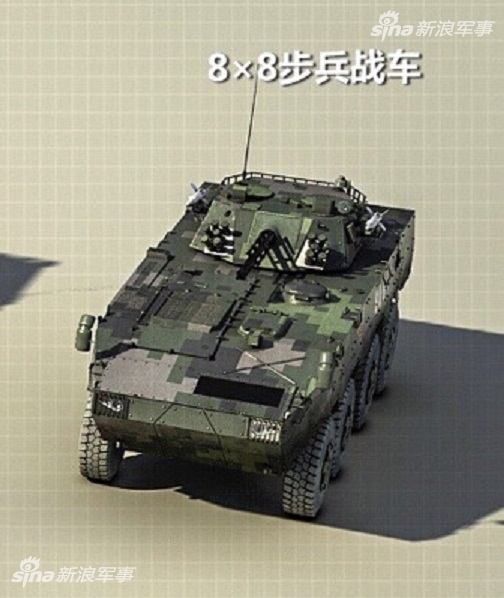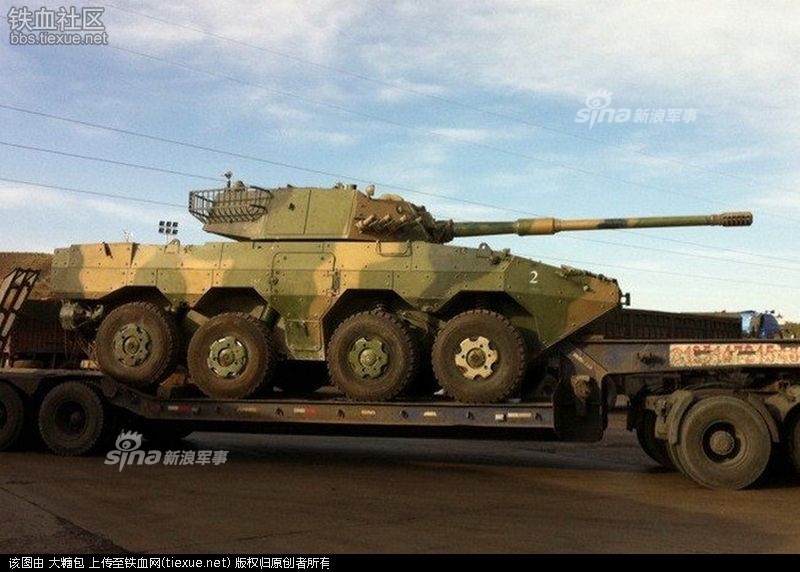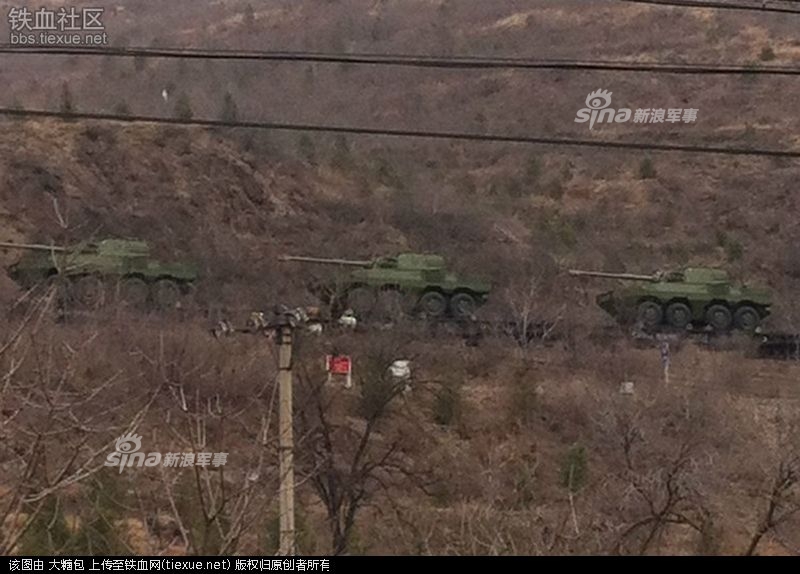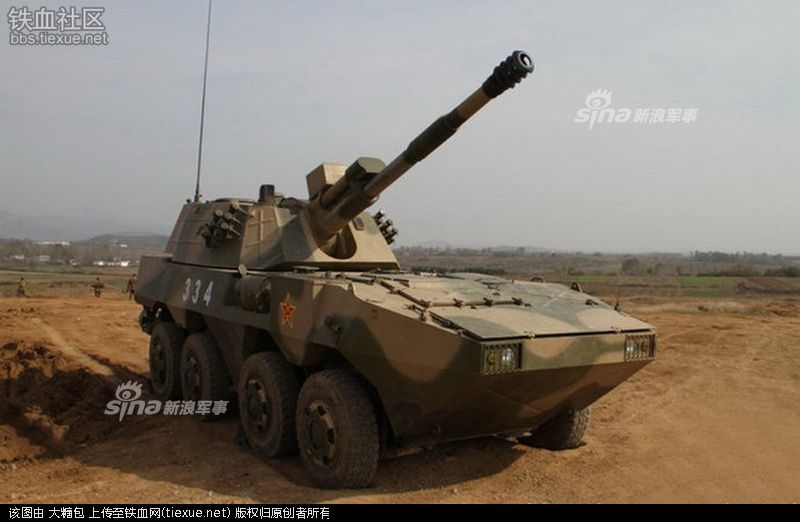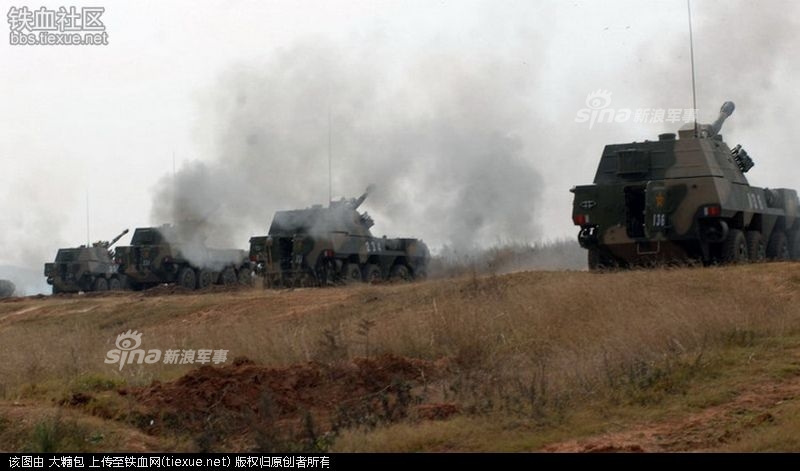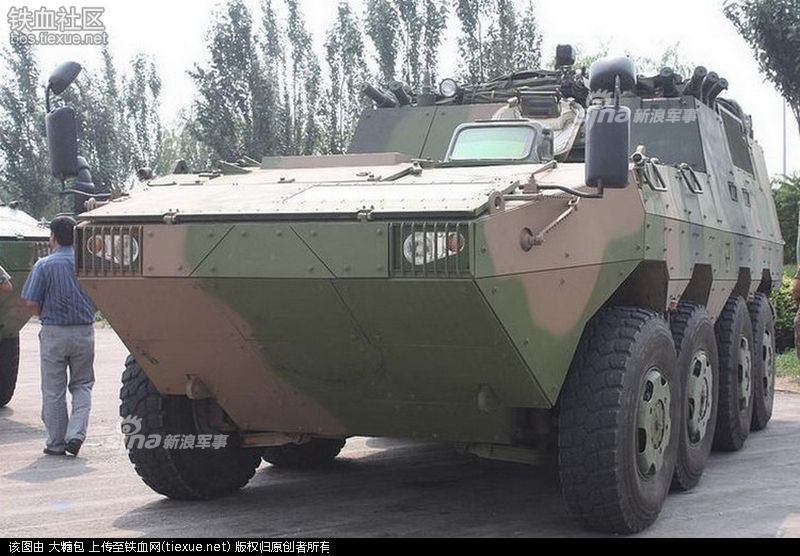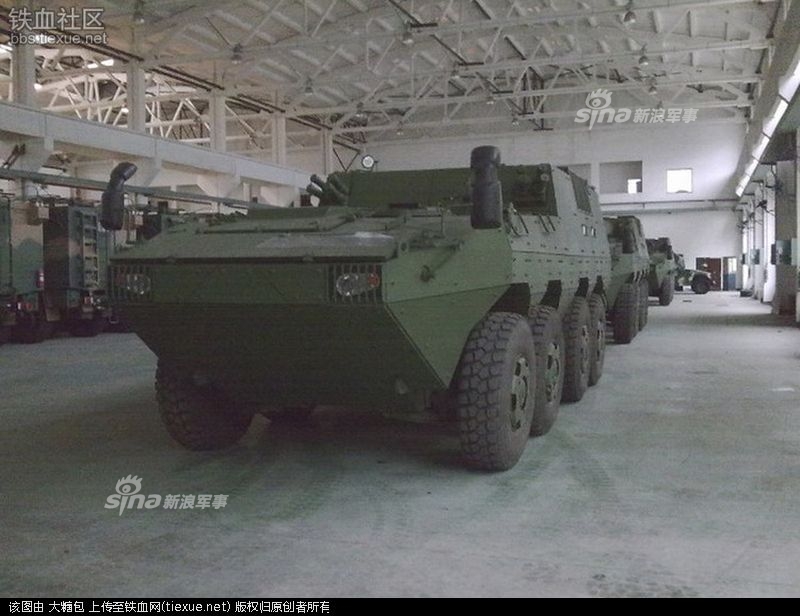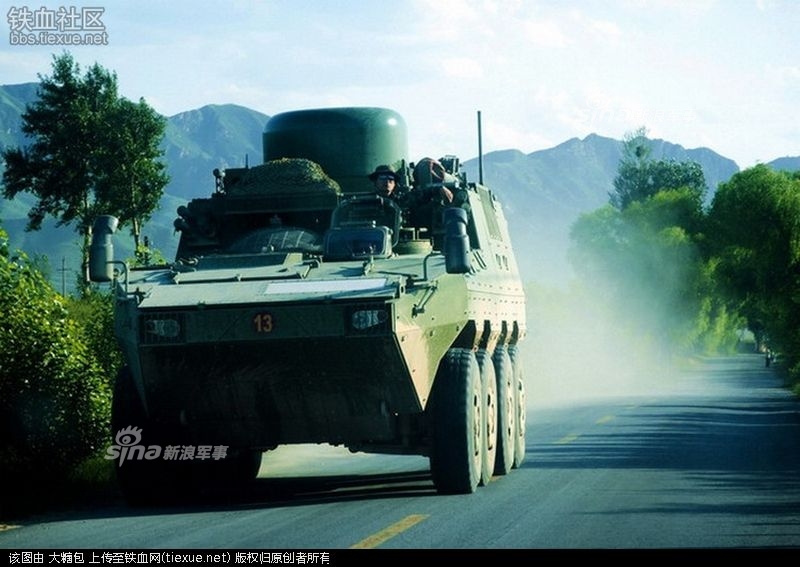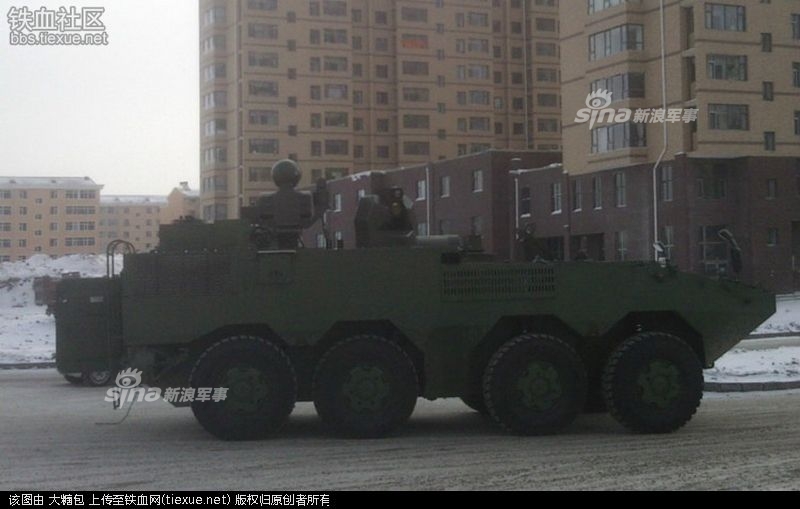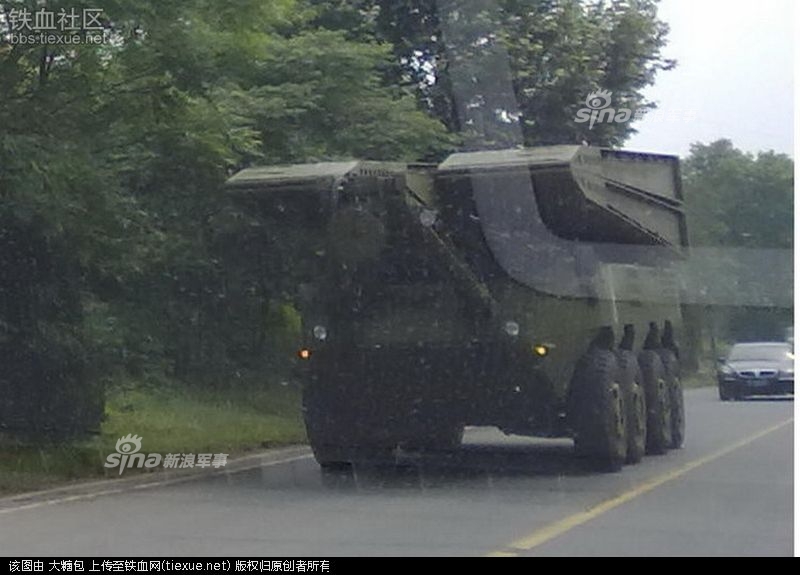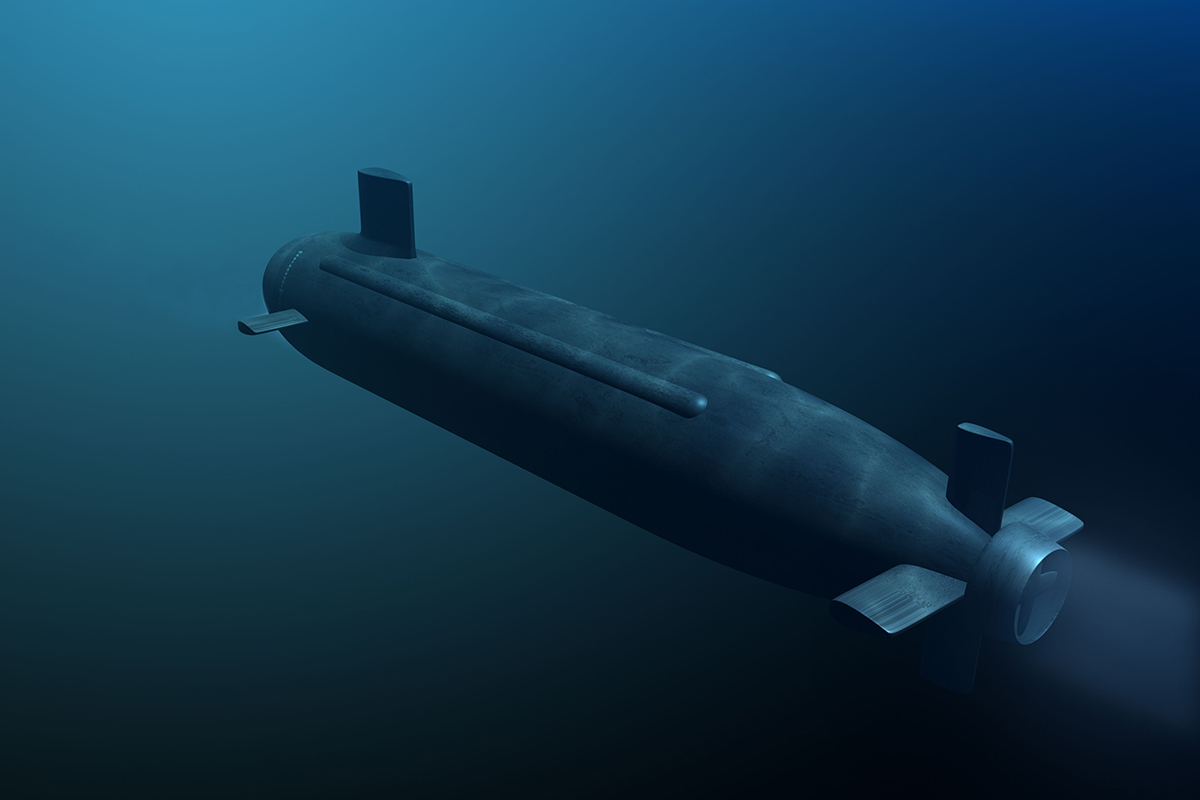Xijinping overturned the Naval Advantage against all nations
Now Xijinping built world's most quiet stealth submarines, plus the most sensitive sub detection system that is more than 1000X better than any sonar system - which is Chinese magnetic sensors.
New PLA submarines have no propeller nor drive shaft and it is a quiet water jet pump driven by nuclear reactor and electricity.
http://nationalinterest.org/blog/the-buzz/could-sink-the-us-navy-lethal-stealth-submarines-15034
The Buzz
This Could 'Sink' the U.S. Navy: Lethal Stealth Submarines
Harry J. Kazianis
January 27, 2016
TweetShareShare
Printer-friendly version
There is no force patrolling the world’s oceans more powerful than the mighty U.S. Navy. Washington’s nuclear-powered attack and ballistic submarines, aircraft carriers and surface combatants, all guided by the best trained sailors and professionals in the world, are no match when stacked up on paper one-on-one against the likes of Russia, China, Iran or any other challenger. And as history shows, going to war against Washington in a fair-fight is suicide. However, thanks to advances in modern, ultra-quiet conventional diesel-electric submarines, Washington will need to adjust its tactics if it were to tangle with any nation sporting these increasingly sophisticated weapons of war.
To be fair, the threat of super-stealthy diesel submarines being deployed around the world has been present for decades. Still, newer boats are coming armed with advanced anti-ship weapons and are being combined with new air-independent propulsion systems (AIP) making them near impossible to find in the ocean's depths—a one-two punch that can’t be ignored.
Recent history shows only too clearly the challenge the United States and other modern navies are facing from these heavily armed, ‘stealth’ submarines. Back as far as 2005, the U.S. Navy recognized the challenge and reached out to friends and allies for help. It was that year that the HMS Gotland, a modern AIP submarine serving in the Swedish Navy, made its home in California for a year. The goal was to test the impact of such a boat against U.S. aircraft carrier battle groups and other important vessels. It seems the boats, much cheaper to produce than the standard American nuclear-attack subs, created quite the stir:
“Apparently the Navy got more than they were bargaining for when it came to finding and engaging the stealthy little sub. The Gotland virtually ‘sunk’ many U.S. nuclear fast attack subs, destroyers, frigates, cruisers and even made it into the 'red zone' beyond the last ring of anti-submarine defenses within a carrier strike group. Although it was rumored she got many simulated shots off on various U.S. super-carriers, one large-scale training exercise in particular with the then brand new USS Ronald Reagan ended with the little sub making multiple attack runs on the super-carrier, before slithering away without ever being detected. . . ”
“. . .the little Swedish sub was "so silent it literally did not exist to our sensors."
Thankfully the above were controlled exercises, crafted for America’s ‘silent service’ and surface combatant operators to understand the threat they were dealing with. However, not all encounters with ultra-quiet diesel boats have been as friendly—or just a mere exercise. Back in 2006, a Chinese Song-class attack submarine, created at least partially by Russian and Western technology and likely not nearly as advanced as the Gutland (the Song-class does not have AIP technology, for example) tailed the Japan-based U.S. Navy aircraft carrier USS Kitty Hawk in the East China Sea near Okinawa without being identified. While such a shadowing operation is quite normal, the sub “surfaced within five miles of the carrier, in deep waters off Okinawa, and only then was it spotted, by one of the carrier's planes on a routine surveillance flight.” Such submarines are armed with advanced anti-ship missile and wake-homing torpedoes.
Moving to the present, Russia seems to be doubling down on its development of these important vessels. Moscow is developing an even deadlier class of boats:
“The stealth capabilities of Russia’s new Lada-class diesel-electric submarines far exceed those of their predecessors, Admiraty Shipyard’s CEO Alexander Buzakov told the Russian press.
“According to Buzakov, the new vessels are even stealthier than Russian Kilo-class submarines, thought to be one of the quietest diesel-electric submarine classes in the world and dubbed "black holes" for their ability to "disappear” from sonars.
“The new submarines are able to maintain such a low profile thanks to a clever implementation of a next-generation anti-reflective acoustic coating and a new improved hydro-acoustic system, Buzakov said.
He also added that during the new submarines’ construction and design process, the development team managed to gather a lot of valuable data which, among other things, allowed them to significantly improve the Kilo-class submarines as well.
“The Lada-class submarines are designed to defend coastlines against ships and other submarines, gather intelligence, provide surveillance and reconnaissance missions, and act as a mother ship for special forces. With its new air-independent propulsion plant, a Lada submarine can remain submerged for as many as 25 days. With its vast array of weapon systems, the Lada is also world’s first non-nuclear submarine to be equipped with specialized launchers for cruise missiles.”
Harry J. Kazianis
January 27, 2016
TweetShareShare
Printer-friendly version
So, with all this being said, what should the U.S. Navy do about this challenge? A greater investment in anti-submarine warfare would be a great place to start. New detection methods could also help, although such methods could also be used against Washington’s subs. Here’s an idea: maybe America should get in on the act and get some of its own? Hmmm. . .
Harry Kazianis (@grecianformula) is the former Executive Editor of The National Interest. Mr. Kazianis presently serves as Senior Fellow (non-resident) for Defense Policy at the Center for the National Interest as well as a Fellow for National Security Affairs at The Potomac Foundation. All opinions are his own.
http://www.businessinsider.com/chin...uld-soon-be-quieter-than-us-ones-2017-7/?IR=T
China is building submarines that could soon be quieter than US ones
Minnie Chan, South China Morning Post Jul. 5, 2017, 11:45 AM 7,996
facebook
linkedin
twitter
email
print
china navyChinese People's Liberation Army Navy recruits chant slogan during a parade to mark the end of a semester at a military base of the North Sea Fleet, in Qingdao, Shandong province December 5, 2013.REUTERS/China Daily
The US Navy’s Pacific fleet used to mock Chinese submarines for being too noisy and too easy to detect, but that has largely been remedied in recent years and China is now on the cusp of taking the lead in a cutting-edge propulsion technology.
Naval experts said the new technology would help China build more elusive submarines, but might also prompt the United States to ramp up anti-submarine warfare measures.
In a recent interview with China Central Television, Rear Admiral Ma Weiming, a leading Chinese naval engineer, showed a component of a new Integrated Electrical Propulsion System (IEPS) for naval warships in a laboratory. He said the system, which turns all the engine’s output into electricity, and a rim-driven pump-jet had been fitted to the People’s Liberation Army Navy’s newest nuclear submarines.
“This is one of our work team’s first world-leading projects, which has been used on [China’s] next-generation nuclear submarines,” Ma said in May. “[Our technology] is now way ahead of the United States, which has also been developing similar technology.”
Ma’s exalted status in the PLA Navy was highlighted by a photograph of then navy commander Admiral Wu Shengli holding an umbrella for Ma during an inspection of the PLA Naval University of Engineering in Wuhan, where Ma works, on a rainy day in June last year. The photo, posted on the social media website of the PLA’s Navy Magazine, sparked public curiosity about why the commander would give such “preferential treatment” to a rear admiral.
Ma told CCTV “the ultimate goal” of developing the new propulsion system “was aimed at solving the problem of deploying high-energy radio-frequency (HERF) weapons on board”, hinting that China was close to emulating the US in that regard.
HERF, a form of directed-energy weapon, can fire highly focused energy at a target, damaging it accurately and quickly. Directed-energy weapons require vast amount of electricity – something IEPS can deliver – and can counter the threats posed by fast missiles such as ballistic missiles, hypersonic cruise missiles and hypersonic glide vehicles. Besides China, the US, Russia and India are also developing them.
The CCTV report did not say which types of Chinese submarines would use the pump-jet propulsion system, but mainland military websites said they believed Ma had hinted at the new-generation, nuclear-powered Type 095 attack submarines and Type 096 ballistic missile submarines.
chinese submarineChinese sailors salute on top of a submarine during the fleet's review of the China-Russia joint naval exercise in the Yellow Sea April 26, 2012.China Daily/Reuters
Collin Koh Swee Lean, a submarine expert from the S. Rajaratnam School of International Studies at Singapore’s Nanyang Technological University, said Ma’s remark showcased the growing scientific and technological maturity of China’s submarine development.
“In the long term, if the pump-jet propulsion is declared fully operational and tested successfully ... future [Chinese] submarines would be equipped with pump-jet propulsion as a standard design feature,” he said, adding that the new technology would also benefit other naval shipbuilding projects, such as surface warships.
“The operational/strategic ramifications would be that China would muster stealthier submarines ... and this essentially broadens various options for Beijing where it comes to the peacetime use of its naval capabilities.”
A rim-driven pump-jet has a ring-shaped electrical motor inside the pump-jet shroud, which turns the vane rotor inside the pump-jet cavity to create thrust. The design reduces noise by removing the shaft and also creates fewer water bubbles, making it even quieter.
Modern American and British submarines already use pump-jet propulsion, but Koh said the technology had not been adopted more widely because its design was complex, and just a few countries could support the technology with “a good deal of funding and technical expertise”.
Beijing-based naval expert Li Jie said China had put a lot of resources and encouragement into developing cutting-edge technologies, including the pump-jet, air-independent propulsion (AIP) for non-nuclear submarines and other measures as part of its efforts to make Chinese submarines stealthier.
“Both the ultra-quiet engine and AIP will help Chinese subs to elude foes as high concealment is very important to all nuclear attack subs,” Li said. “Quieter subs means stronger stealth capability, which will help them to conduct surprise attacks when necessary.”
China has built Asia’s largest submarine base at Yulin, on the south coast of Hainan, near Sanya. The base features underground submarine facilities with tunnel access, shielding Chinese submarines that enter the South China Sea from the prying eyes of US reconnaissance satellites. That’s prompted American warships and aircraft to conduct more close surveillance operations in the disputed waters, which are claimed wholly or in part by mainland China, Vietnam, the Philippines, Malaysia, Brunei and Taiwan.
Koh warned it was foreseeable that the US Navy would ramp up anti-submarine warfare measures to detect, classify and track Chinese submarines if they were harder to detect after being fitted with pump-jet propulsion and other stealth equipment.
Chinese Nuclear SubmarineA Chinese Navy submarine takes part in an international fleet review to celebrate the 60th anniversary of the founding of the People's Liberation Army Navy in Qingdao, Shandong province April 23, 2009POOL New/REUTERS
“This more intensified cat-and-mouse game would also result in the risk of underwater accidents ... between submarines or with surface ships,” he said. “The quieter the submarine is, the greater the likelihood of such navigational safety hazards and, potentially, they could cause diplomatic incidents in the context of those maritime disputes and of course, the persistent Sino-US divergence in views over foreign military activities in coastal states’ exclusive economic zones. ”
The Chinese navy is likely to begin construction of the Type 096 submarines, which will be armed with 24 JL-3 intercontinental submarine-launched ballistic missiles, in the early 2020s, according to the Pentagon’s annual report to the US Congress this year.
Ma, 57, became a household name in 2011 when he announced during a speech to accept a national technology award that his team had successfully developed a Chinese electromagnetic aircraft launch system (EMALS).
Ma, a PLA deputy to the National People’s Congress, has since been asked by the media at the annual sessions of the national legislature when his EMALS will be fitted to China’s next-generation aircraft carriers.
“I am very unhappy because I have no power to decide when my EMALS will be used,” a frank Ma told reporters on the sidelines of this year’s NPC session in Beijing in March. “But I dare to tell you that the EMALS developed by my working team is more advanced and reliable than the US system to be used on their Ford-class aircraft carrier.”
The first of America’s Ford-class carriers, the first US vessel to use EMALS, completed sea trials in May.
Sources close to the navy told the South China Morning Post earlier this year that Ma’s EMALS might be fitted on China’s third-generation nuclear-powered aircraft carrier, the Type 003. However, the Central Military Commission, chaired by Xi, has not decided when the Type 003 will be built, and construction work has not yet started on the second-generation Type 002.
The PLA Navy has two aircraft carriers, the Liaoning, a refitted Soviet carrier commissioned in 2012, and the domestically built Type 001A, which was launched on April 26. They are both conventionally powered platforms featuring ski-jump take-off ramps.
chinese navyPool/Getty Images
Xi has urged the PLA to pursue a “strong army dream”, but when asked by the Post whether he hoped to see his EMALS fitted to a Chinese aircraft carrier one day, Ma said he “never has any dreams” and was focused on finding practical projects for his team that would release its potential.
“Whether the new technologies will be used never bothers me, because I’ve found that my task is to cultivate talent, meaning I have to create more opportunities for them and help them solve problems,” Ma said. “For example, compared with the US, China couldn’t devote as much funding to developing the electromagnetic aircraft launch system and advanced arresting gear (AAG) system, but I understood that our valuable resource was that I could mobilise my hundreds of talented students.”
Read the original article on South China Morning Post. Copyright 2017. Follow South China Morning Post on Twitter.
http://www.popsci.com/china-new-submarine-engine-revolutionize-underwater-warfare
China's new submarine engine is poised to revolutionize underwater warfare
It looks a lot like 'Red October' in real life.
By Jeffrey Lin and P.W. Singer posted Jun 2nd, 2017 at 10:51am
Red October Submarine
Red October SSBN
The Red October, a fictionalized version of the Akula (NATO reporting name Typhoon) submarine, has two pumpjets built into its rear for silent propulsion (though implausibly stated to use a noisy magnetohydrodynamic drive in the movie). According to Chinese state media, the nation's new nuclear submarines will soon use a similarly silent, cutting-edge pumpjet.
Paramount Pictures
In Tom Clancy's book (and, later, the 1990 film) The Hunt For Red October, a Soviet submarine debuts a revolutionary, ultra-quiet engine that uses pumpjets and electrical propulsion technology to elude its foes. Chinese state media has reported that the nation is fitting its newest nuclear sub with an engine that sounds a lot like Clancy's imaginings in the real world.
Rear Admiral Ma Weiming China electric propulsion pumpjet
The Admiral and the Pumpjet
During his interview on state television, Admiral Ma Weiming, developer of the rim-driven pumpjet, shows off a laboratory, with a schematic of the pumpjet visible in the background, at right.
CCTV 13
This month, Chinese state TV channel CCTV 13 broadcast an interview with a top Chinese naval engineer, Rear Admiral Ma Weiming. The admiral is notably responsible for the development of multiple Chinese naval electromagnetic programs, including the electromagnetic catapult and railguns. In the interview, he stated that the PLAN is fitting its newest nuclear attack submarines with a "shaftless" rim-driven pumpjet, a revolutionary and silent propulsion system.
China Type 095 SSN nuclear submarine
Type 095 SSN
The Type 095 SSN, seen in this speculative fanmade CGI, will likely have VLS cells for launching a wide range of cruise missiles, pumpjet propulsion, and improved quieting technology. (This earlier CGI shows the Type 095 with a more conventional pumpjet, though.)
Medico-MAX
If the system is being put on the latest vessels, it is likely to be used on the first Type 095 nuclear attack submarine (SSN), which is under construction.
Rim Driven Thruster Pumpjet
Rim Driven Thruster
Shown here is a Schottel built rim-driven thruster, used to propel surface ships like yachts with minimal noise (the Chinese miltary rim-driven pumpjet would look similar but much larger).
Schottel
A rim-driven pumpjet has a ring-shaped electrical motor inside the pumpjet shroud, which turns the vane rotor (a vane rotor has the fan blades attached to a rotating band built on a cylinder interior, as opposed to a propeller shaft) inside the pumpjet cavity to create thrust. Previous submarine pumpjets are "shrouded propellers," which consist of a tubular nozzle covering the propeller. By removing the shaft of the propeller, the reduction in the number of moving parts decreases the noise made by the pumpjet, as well as saving hull space. Civilian manufacturers also claim that rim driven pumpjets are easier to maintain, and have less cavitation (bubbles that form during propeller movement), making them even more quiet.
Rear Admiral Ma Weiming China electric propulsion
IEPS
Rear Admiral Ma presents a component of the new Chinese IEPS for naval warships; the Chinese variant is the world's first IEPS to run on a medium-voltage, direct-current system.
CCTV 13
Also in the video background was a large piece of electrical machinery, which is part of the PLAN's Integrated Electrical Propulsion System (IEPS). IEPS turns all the output of the ship's engine into electricity, unlike traditional propulsion designs, which convert engine and reactor output into mechanical action to turn the propeller shaft.
The high electrical output can be used to power motors for the propellers or potentially high-energy weapons. Additionally, IEPS has far fewer moving parts, making them quieter, and thus ideal for use on submarines. When coupled with quieter reactors like the Type 095's reported natural circulation reactor, the rim-driven pumpjet and IEPS can drastically reduce the acoustic signature of any SSN.
This combination, if it works, would be a significant gain for China's naval power. As China has gained in surface fleet numbers, stealthy planes, and longer-ranged missiles able to target U.S. carriers and air bases, America's submarine force has become viewed as its key advantage in any comparison. In turn, Chinese nuclear submarines have lagged behind competitors in their noisiness. Said another way, these innovations have the potential to strengthen a historic weakness.
The reporting is significant for two more reasons. First, it illustrates the new openness in Chinese state media to discuss the technology behind previously secretive nuclear submarines, suggesting a greater confidence in showing off new military technology in order to impress domestic and foreign audiences.
Secondly, if the system works, the Chinese may have stolen a march on the Americans and British, whose Columbia and Dreadnought nuclear ballistic missile submarine (SSBN) have the option for rim-drive pumpjets, but will not enter service until 2030. While the system would be on China's attack submarine, Chinese SSBNs could also use the rim-drive pumpjet to enhance their stealth and survivability—and, by extension, the credibility of China's second strike nuclear capability. These new submarine propulsion systems may not just power China's submarines of the future, but give Beijing a true superpower's underwater armada.



